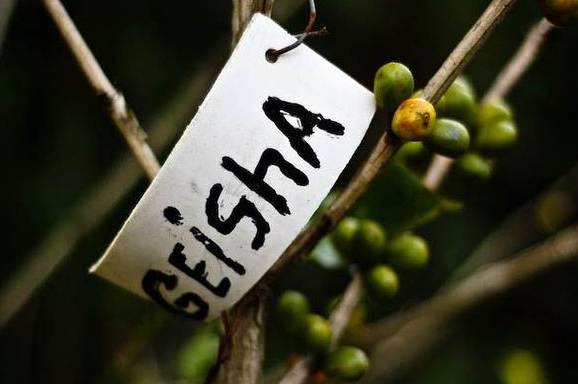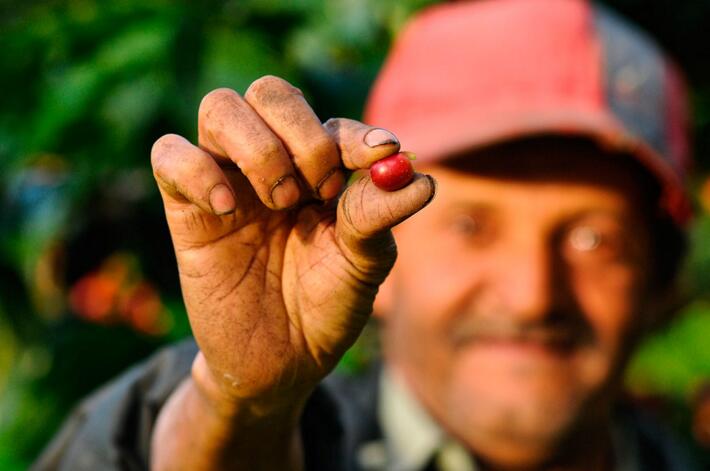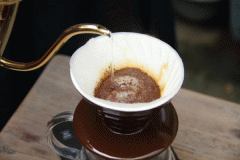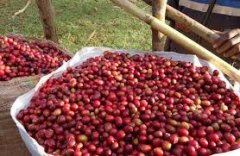Is Geisha a geisha or a geisha? The difference between the flavor of sunburn and water-washed Rosa
For professional baristas, please follow the coffee workshop (Wechat official account cafe_style)

Geisha stories are both revival and progress. This is a bridge between a rich history and a bright and fast-changing future in the coffee world. The tree and the beans it produces suddenly become a lighthouse pointing to the coffee landscape we all want to see, and a cup of geisha allows us to see coffee as close to perfection as possible, which is a sensory ecstasy. It's an inspiring feeling.
No other coffee likes it better. This is a very aromatic coffee, once the water on the cup, you will notice-you can immediately find sweet flowers, citrus flowers, jasmine and sweet aromas. A bergamot-like finish and a unique, although subtle acidity is its typical cup outline.
The story of Rose Summer begins in Ethiopia, the birthplace of Arabica and the only wild species on earth. As early as 1931, a group of botanists explored the forests of southwestern Ethiopia (then known as Abyssinia) to collect coffee seeds in what locals call "geisha". The seeds were taken to Kenya and planted in nurseries. Five years later, the trees began to bear fruit, with several options taken from the healthiest and most dynamic trees and taken to other gardens in Uganda and Tanzania. Nearly two decades later, in 1953, some geisha seeds from a Tanzanian garden were brought to Costa Rica to join the varieties studied by CATIE, a world-renowned agricultural research center.

Then in 1963, a farmer named Pachi Serracin brought some of these seeds to Panama and planted them in the high-altitude soil of the Boquete volcano. At this point, they are just a curiosity-a "why not?" The proposition-after years of farming, they seem to have been basically abandoned because of their low yield and lack of firmness. Soon after they were forgotten, they became a growing group of weak trees in Caturra and other common Latin varieties.
But it changed in 2003. Daniel Peterson (Daniel Peterson) of Esmeralda Manor noticed that the tree was very different from everything else. Until this point, they are usually harvested with other coffees and mixed to other areas. After harvesting the coffee separately and tasting it in his laboratory, he and his family realized that it tasted very different from anything else. Out of curiosity, they decided to send the coffee to the best game in Panama to see what happened. They are not at all sure whether people will like it or whether it is considered a typical "typical" deviation of Panamanian coffee.
What happened next was the coffee revolution. Of the 25 finalists, one made all the judges happy and confused at the same time. You can smell it from the table-beautiful aromas of jasmine, lemon grass, coffee blossoms, sweet oranges and white peaches floating across the room. The game was over before the game began. This cup of coffee intoxicated everyone on the jury, and it was clear from the beginning that it would win because of the landslide. Then there is a series of performances that help geisha cement itself is more than just a glittering pan. With rare exceptions, this Panamanian geisha coffee has won all the competition in the past decade. To this day, geisha continues to sit on the throne as the defending champion of Latin American coffee style.
Like most coffee, sun-treated rose summer is sweeter and more tea-like than water-washed coffee. And the water washing will be brighter and more elegant.
Important Notice :
前街咖啡 FrontStreet Coffee has moved to new addredd:
FrontStreet Coffee Address: 315,Donghua East Road,GuangZhou
Tel:020 38364473
- Prev

How to highlight the Flavor of Brazilian Coffee in Yellow Bourbon / Yellow Bourbon Cooking skills in Hilado, Brazil
The exchange of professional baristas please follow the coffee workshop (Wechat official account cafe_style) semi-washed coffee is mainly produced in the Hirado area! Its characteristic is that the coffee beans are not impregnated by the fermentation tank. The acidity, sweetness, taste and flavor of this coffee are quite good. According to coffee experts, there are fewer defective beans in semi-washed coffee beans than in the sun.
- Next

How does the Columbia-Santa Marta Regional Fair Trade Association operate?
For the exchange of professional baristas, please follow the coffee workshop (Wechat official account cafe_style) Columbia-Santa Mata (Santa Marta) Regional Fair Trade Association (FT) Colombian coffee is widely sold in many producing countries, ranking the third largest in the world (the first is Brazilian coffee and the second is Vietnamese coffee). The main factor is that active volcanic activity has contributed to the success of the world.
Related
- Beginners will see the "Coffee pull flower" guide!
- What is the difference between ice blog purified milk and ordinary milk coffee?
- Why is the Philippines the largest producer of crops in Liberia?
- For coffee extraction, should the fine powder be retained?
- How does extracted espresso fill pressed powder? How much strength does it take to press the powder?
- How to make jasmine cold extract coffee? Is the jasmine + latte good?
- Will this little toy really make the coffee taste better? How does Lily Drip affect coffee extraction?
- Will the action of slapping the filter cup also affect coffee extraction?
- What's the difference between powder-to-water ratio and powder-to-liquid ratio?
- What is the Ethiopian local species? What does it have to do with Heirloom native species?

